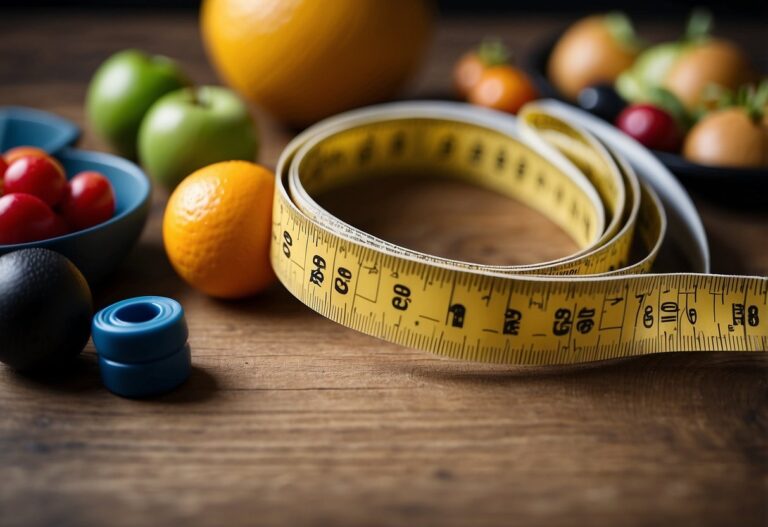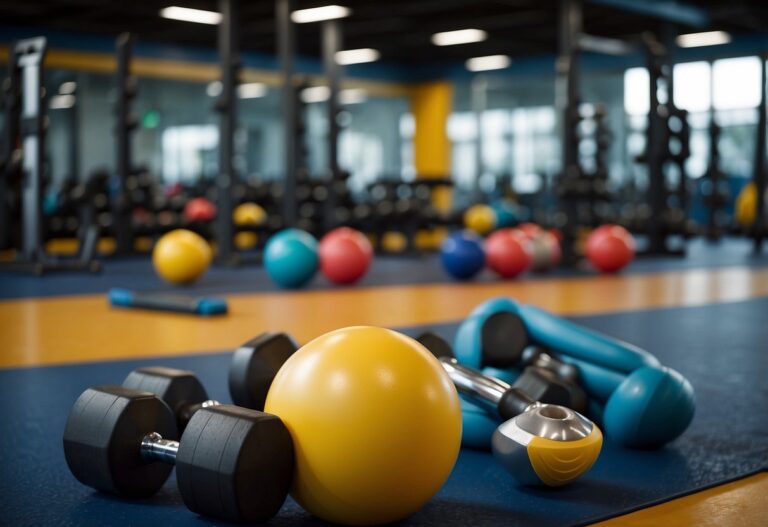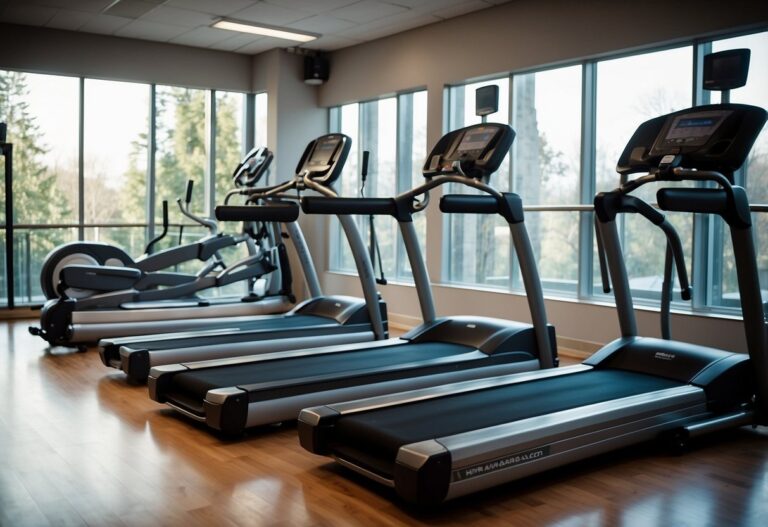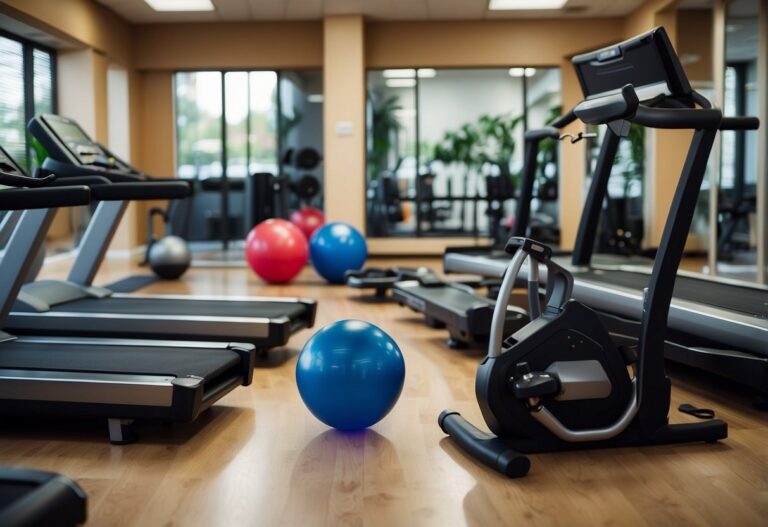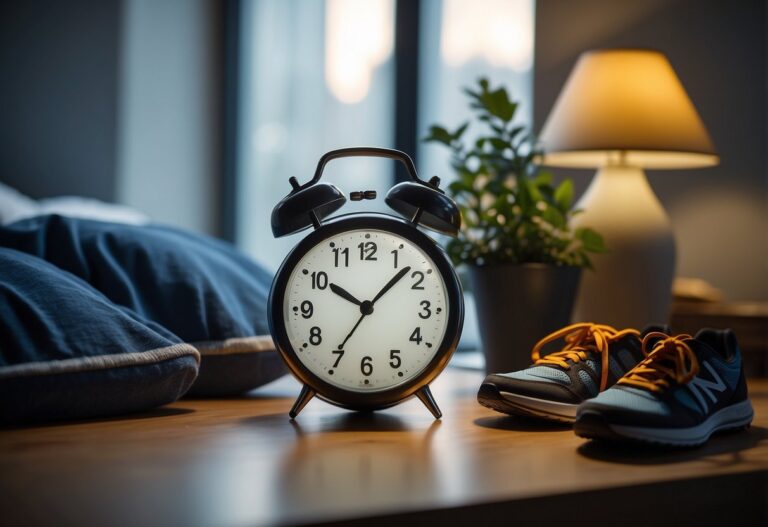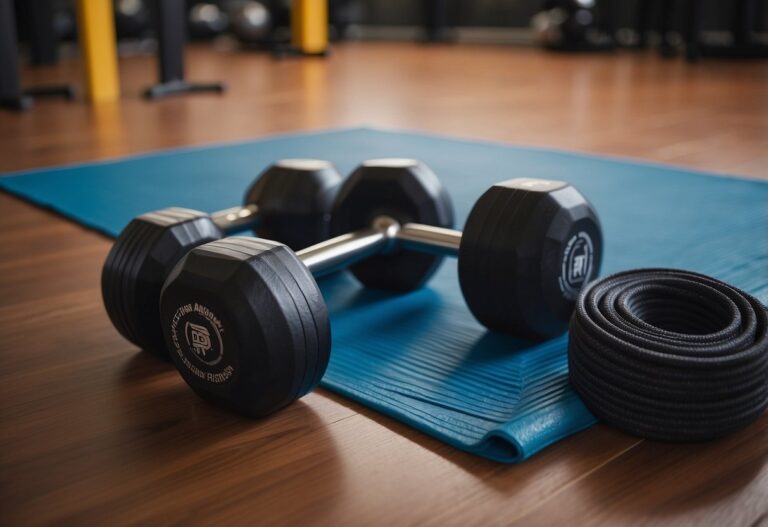When you’re a teenager, starting a workout routine can be both exciting and challenging. It’s a great time to build healthy habits that can last a lifetime. Whether you’re aiming to get stronger, improve your sports performance, or just feel better overall, going to the gym offers numerous benefits.
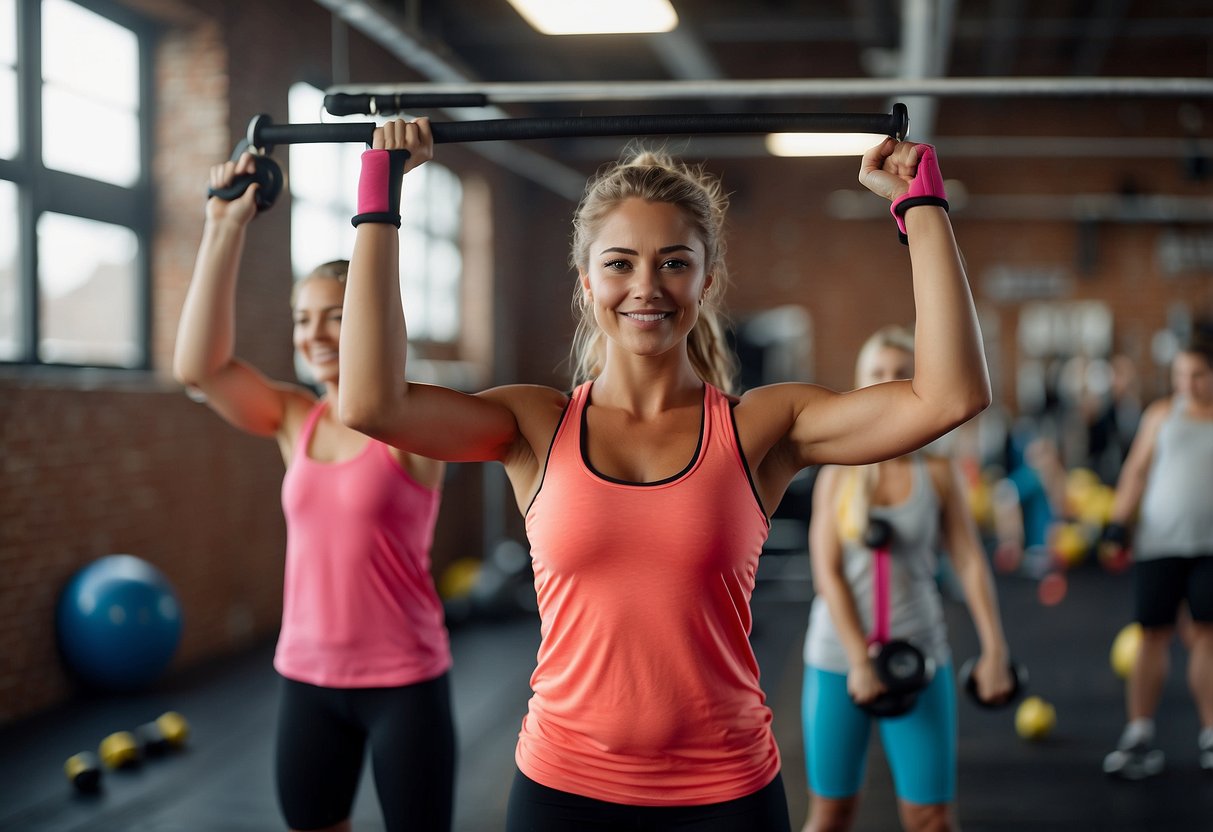
Knowing the best workout tips can help you stay on track and make the most out of your gym sessions. You’ll learn how to exercise safely, choose the right workouts, and keep yourself motivated. By following some practical advice, you’ll make steady progress towards your fitness goals, maintaining a healthy balance between school, social life, and physical activity.
Warm-up with Dynamic Stretches
Starting your workout with dynamic stretches is crucial. These stretches get your blood flowing and muscles ready for action. Unlike static stretches, dynamic ones involve movement that mimics the exercises you’re about to do.
One effective dynamic stretch is the arm circle. Stand with your feet shoulder-width apart. Extend your arms and make small circles in the air, gradually increasing their size. This warms up your shoulders and back.
Another great move is the inchworm. Stand up straight, then bend forward, placing your hands on the ground. Walk your hands out to a push-up position. Next, walk your feet up to your hands. Repeat this a few times to wake up your whole body.
Jumping jacks also make an excellent warm-up. Start with your feet together and hands at your sides. Jump, spreading your legs and bringing your arms above your head. Jump again to return to the starting position. This gets your heart rate up and warms your muscles quickly.
Dynamic stretches like these ensure you’re ready for the physical demands of your workout. They reduce the risk of injury and improve performance. So, before you hit the gym, take a few minutes for these essential warm-up moves.
Focus on Compound Exercises

When you’re starting out at the gym, focusing on compound exercises can make a huge difference.
Compound exercises work multiple muscle groups at once. Think of moves like squats, deadlifts, and pull-ups. These exercises boost your overall strength and save time.
By using compound exercises, you also improve your balance and coordination. For example, a bench press targets your chest, shoulders, and triceps all in one go.
Incorporating these exercises into your routine can lead to faster muscle growth and better athletic performance. You’ll see the benefits not just in the gym, but in daily activities too.
Keep Proper Form
Paying attention to form is crucial when working out. Using the right technique helps you avoid injuries and get the most out of your exercise.
When lifting weights, always start with a light load. Focus on your form before adding more weight. This way, you build your strength without straining your muscles.
It’s essential to listen to your body. If something feels off, stop and reassess your form. Sometimes minor adjustments can prevent potential problems.
Don’t hesitate to ask for guidance. Whether it’s a coach, trainer, or experienced friend, getting advice on your form can make a huge difference. This helps you learn and improve faster.
Remember, the goal is to build a solid foundation. Proper form sets you up for long-term success in your fitness journey.
Gradual Progression for Weights

Start with light weights when you first hit the gym. This helps you learn the correct form without risking injury. For the first few weeks, focus on getting comfortable with movements like squats and bench presses.
Once you feel confident, gradually increase the weight. This step-by-step approach helps build your strength safely. It’s important to listen to your body and not rush the process.
Mix in bodyweight exercises like push-ups and pull-ups to help balance your routine. They improve coordination and strength. Be patient and persistent, and you’ll see progress over time.
Stay Hydrated
It’s essential to drink enough water throughout the day. Dehydration can affect your performance in the gym.
Aim to drink 7 to 8 glasses of water daily. This helps regulate your body temperature and remove toxins.
For young athletes, try to drink 16 ounces of water an hour before exercise. This can help you stay hydrated during your workout.
Feel free to mix things up with fruit juices or herbal teas, as long as you’re meeting your water goals. Staying hydrated isn’t just about drinking plain water.
Remember, hydration is key to keeping your body working well during any physical activity.
Balanced Diet for Muscle Growth
Eating right is just as important as working out. Your body needs the right fuel to build muscle and stay healthy. Start with protein, which is crucial for muscle development. Aim for about 0.8 grams of protein per pound of body weight each day. This means if you weigh 150 pounds, you should consume around 120 grams of protein daily.
Carbohydrates are also essential. They provide the energy you need for intense workouts. Foods like whole grains, fruits, and vegetables are great choices. They help you power through your gym sessions and recover afterwards.
Don’t forget about healthy fats. They support hormone production and overall health. Include sources like avocados, nuts, and olive oil in your diet. These fats help in muscle recovery and growth.
Lastly, stay hydrated. Water is vital for all bodily functions, including muscle recovery. Aim to drink at least 8 glasses of water a day, and more if you’re working out intensely.
For more details on teenage nutrition for muscle gain, check out teen nutrition for muscle gain.
Rest Between Sets
Resting between sets is super important for your workouts. It helps you recover and get ready for the next set.
For strength exercises like squats or bench press, you should rest for about 2-3 minutes. This gives your muscles a good break to recover.
During other exercises such as push-ups or pull-ups, a rest of 1.5-2 minutes should be enough. This keeps you fresh without dragging out your workout too long.
It’s about finding a balance. You don’t want to rest too long and lose focus, but you also don’t want to rush and risk injury.
Avoid overtraining
It’s important to watch out for overtraining. When you train too much, your body doesn’t get enough time to rest and recover.
Look for signs like feeling extra tired during workouts. If you notice you’re not as strong as before, it could be a sign of overtraining.
You should also pay attention to how your muscles feel. If they’re unusually sore or stiff, take a break. Overtraining can result in things like excessive sweating or feeling heavy.
Remember, rest is just as important as exercise. This helps your muscles to grow and repair.
Use appropriate gym gear

Wearing the right gym gear is crucial for a safe and effective workout.
Start with comfortable clothing. Choose breathable fabrics that allow for a full range of motion. Avoid clothes that are too tight or too loose, as they can hinder your movements.
Invest in good gym shoes. Proper footwear provides the support you need and helps prevent injuries. Look for shoes designed for your type of workout, whether it’s running, lifting, or cardio.
Don’t forget protective gear if needed. For instance, using wrist wraps or knee supports can be beneficial when lifting weights. Always prioritise your safety to get the most out of your workouts.
For more information on safe gym practices and equipment, you can check out tips and guidelines on junior gym equipment.
Track your progress
Tracking your progress in the gym is essential. One effective way is to take progress photos. By comparing side-by-side photos taken every few weeks, you can see changes in your physique. This is especially motivating as you’ll notice improvements that might not be obvious day-to-day.
Another method is to pay attention to how your clothes fit. If your shirts or jeans start to feel looser, you’re likely losing fat and gaining muscle. This can be a great confidence booster and a clear sign you’re on the right track.
You can also keep a workout journal. Write down the exercises you do, the weights you lift, and the number of sets and reps. Tracking these details helps you see strength gains over time and keeps you focused on your goals.
Using apps or fitness trackers can also help. These tools can record various stats like your workouts, steps, and even your heart rate. Having this data at your fingertips makes it easier to see patterns and adjust your routines as needed.
Benefits of Gym Workouts for Teenagers
Gym workouts offer numerous benefits for teenagers, ranging from improving physical fitness to enhancing mental health and increasing social interactions. The advantages highlighted here can make a significant impact on their overall well-being.
Physical Health Benefits
Regular gym workouts help teenagers build strength and improve cardiovascular health. Exercises like pull-ups and tricep dips tone muscles and boost endurance. Engaging in activities such as squats and dumbbell lunges strengthens bones and joints, reducing the risk of injuries.
Moreover, physical fitness regimes can help manage weight, promote healthy growth, and improve posture. For instance, activities like yoga can enhance flexibility and balance. Consistent exercise also supports a healthy metabolism, helping teenagers maintain energy levels throughout the day.
Mental Health Benefits
Exercise plays a crucial role in mental well-being. It reduces stress and anxiety levels by releasing endorphins, the body’s natural mood lifters. Studies have found that teenagers who exercise regularly often sleep better and feel more energised during the day (better sleep).
Participating in gym workouts can also improve self-esteem and confidence. As teens achieve fitness goals, they build a positive self-image. Physical activity provides a healthy outlet for frustrations and negative emotions, potentially decreasing feelings of depression. Engaging in structured routines instils a sense of discipline and accomplishment.
Social Benefits
Going to the gym also offers social perks. Teens have a chance to interact with peers who share similar interests, which can foster a supportive community. Group classes, like yoga or circuit training, encourage teamwork and camaraderie.
Working out in a gym environment teaches important social skills, such as communicating effectively and supporting one another’s fitness journeys. It also provides a non-academic space where teenagers can build friendships and feel a sense of belonging. These social interactions are invaluable, contributing to a well-rounded social development.
Furthermore, having workout buddies can increase motivation and consistency, making exercise a more enjoyable and sustainable habit.
Safety Tips for Teenagers
When starting out with gym workouts as a teenager, safety is crucial. Here are some key tips to help you stay safe and make the most of your exercise routine.
Proper Form and Technique
Maintaining proper form and technique is essential to prevent injuries. When lifting weights, always keep your back straight and knees slightly bent. Poor form can lead to muscle strains or more serious injuries.
Starting with light weights and focusing on the correct movements is important. You can then gradually increase the weight as you get stronger, which helps you build strength without putting too much stress on your body. Avoid exercises that strain your growth plates, especially those involving heavy loads on your spine.
Watching instructional videos or asking a gym trainer for advice can be very helpful when learning new exercises. Incorrect technique, even with light weights, can cause issues over time. Consistency in using proper form will help you develop good habits and keep you safe.
Supervision and Guidance
Having proper supervision and guidance in the gym can make a significant difference in your workouts. Working out with a partner, coach, or trainer ensures someone is available to correct your form and provide assistance when needed. This is especially important if you’re lifting heavy weights or trying new exercises.
Certified trainers can offer personalised advice and ensure that your workout plan suits your goals and abilities. They can also help you create a balanced routine that includes strength training, cardio, and flexibility exercises.
Never hesitate to ask questions if you’re unsure about how to use a machine or perform an exercise. Good guidance can help you avoid common mistakes and teach you the safest ways to achieve your fitness goals.
Listening to Your Body
Listening to your body is crucial in avoiding overtraining and injuries. If you feel pain, stop immediately—pushing through pain can lead to serious injuries. It’s important to differentiate between mild discomfort from a challenging workout and actual pain that signals harm.
Rest days are also an essential part of any workout routine. Your muscles need time to recover and grow stronger. Ensure you get enough sleep and maintain a balanced diet to support your fitness efforts.
Recognising when your body needs a break can prevent burnout and keep you motivated. Always hydrate properly before, during, and after workouts. If you feel dizzy or overly fatigued, it might be a sign that you need to rest or adjust your routine.
Creating a Balanced Workout Plan
Creating a balanced workout plan is essential for teenagers as it helps build strength, improves cardiovascular health, and ensures overall fitness. Key elements include combining strength training with cardio, ensuring proper recovery, and maintaining good nutrition and hydration.
Incorporating Strength Training and Cardio
A balanced workout plan should include both strength training and cardio. Strength training exercises such as push-ups, squats, and lunges help to build muscle and improve body composition. Aim for exercises targeting major muscle groups, creating a balanced routine. Using bodyweight exercises is a great start and can be done anywhere.
Cardio workouts such as running, swimming, or cycling are important for heart health and stamina. Teenagers should aim for 30 minutes of moderate to intense cardio, three to five times a week. Mixing strength training with cardio ensures a well-rounded fitness plan. For example, alternating strength training days with cardio days allows for balanced development and reduces the risk of overtraining.
Ensuring Adequate Recovery
Recovery is crucial in any workout plan. Teenagers need to allow their muscles to recover to avoid injuries and improve performance. Rest days should be integrated into the workout schedule, ideally one to two days a week. During these rest days, light activities like walking or yoga can help keep the body moving without intense strain.
Sleep is another significant factor in recovery. Teenagers need around 8-10 hours of sleep per night to support muscle repair and overall health. Proper sleep hygiene, like maintaining a regular sleep schedule and creating a restful environment, can enhance recovery efforts. Listening to your body and recognising signs of overtraining, such as persistent soreness or fatigue, is essential for maintaining a healthy workout routine.
Nutrition and Hydration
Nutrition and hydration play a vital role in supporting a teen’s workout plan. Eating a balanced diet rich in protein, healthy fats, and carbohydrates provides the necessary energy and nutrients for growth and activity. Protein, found in foods like chicken, fish, beans, and nuts, helps in muscle repair and growth. Carbohydrates, such as whole grains, fruits, and vegetables, are the body’s main energy source.
Hydration is equally important. Drinking plenty of water before, during, and after workouts ensures that the body remains hydrated. Teenagers should also be mindful of their electrolyte levels, which can be maintained through a diet that includes foods rich in potassium, sodium, and magnesium. Carrying a water bottle and drinking regularly can help maintain hydration and overall performance during workouts.


